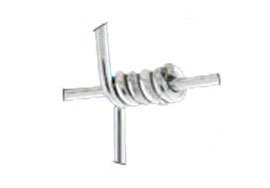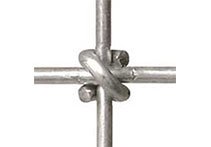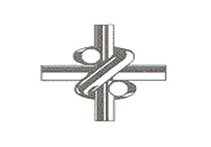Guide to Stock Fencing
Stock fencing has seen a number of improvements and new technologies in the last ten years and your choice of stock netting available has greatly increased. When choosing stock fencing today, choices include the type of wire and type of knot which sit alongside the correct mesh pattern for what you are looking to fence.
Stock fencing is available in high tensile and light tensile options. Tensile strength determines the amount of pressure that can be put on the fence before it breaks, so think of situations such as animal lean.
Mild tensile wire
Mild tensile offers a tensile strength of 600-800 N/mm (Newton/millimetre), and is still a very popular choice for stock fence due to familiarity and ease of installation rather than effectiveness. It is galvanised to BSEN10244 . Benefits of this tensile strength include flexibility of the wire. This choice of fence is sensitively priced and still a worthy choice, dependant on the job at hand and the expected durability and longevity of life required. Only available in a hinge joint fixing (see below).
High tensile wire
Hinged jointed high tensile offers a tensile strength of 1050-1250 N/mm considerably stronger than the lighter mild wire options. It is heavily galvanised to BSEN10244. High tensile fencing has established itself in the market place as a more effective long life option, most contractors will now opt for high tensile wire so they can provide a strong longer lasting fence. With the right tools and a degree of knowledge high tensile fencing can be erected by any competent person. High tensile fence is manufactured from flexible and resilient high tensile wire and because of its tension retaining properties, this means fewer posts are needed, resulting in a saving of timber, erection time and labour costs. Available in hinge joint and X knot joint (see below).
High tensile alu/zinc coated
The latest improvement in wire types includes the XTRALIFE coating that is available in all X fence netting products. It offers a resilient high tensile wire which in addition features a unique 95% Zinc 5% Aluminium coating proven to last 2-3 times longer than standard galvanised wire. This Xtralife wire also make the wire more ductile making it easier to work. Only available in X knot joint (see below).
In addition to wire tensile strengths, there are also a number of fence knot options to choose from.
Hinge Joint
Hinge joint is probably the type of wire netting you’re familiar with, it’s commercially produced, sensibly priced and easy to work with. Its available in both mild and high tensile strength, with the higher tensile allowing for more pressure to be put on it resulting in a tighter, springier fence. The main issue with this type of knot is that livestock can force the vertical wires apart as well as collapse the fence horizontally if something more interesting is on the other side. However, there’s some new players on the block with some significant benefits which deserve consideration.
X fence 
Introducing X fence. X fence offers premium, superior performance. What’s so special about X fence is its unique X knot. It is proven to be 24% stronger knot than that of a titelock knot and way exceeds the strength of a hinge joint.
Forge Knot
A question we often get asked is what is the difference between Forge Knot and X fence? X fence features an alu/zinc coated wire which increases the lifespan of the wire by 3-4 times. Forge knot with its heavily galvanised finish was introduced to offer a more competitive alternative to X fence, whilst still providing a quality long lasting fence.
Mesh patterns
Another factor to consider in choosing the right stock fencing roll for the job is the mesh pattern (placement of the horizontal and verticle wires). 8-80-15 is one of the most popular patterns we sell, with its 8 line wires (8-80-15) giving a total fence height of 80cm (8-80-15) and vertical wires placed 15cm apart (8-80-15).
You will also notice that the line wires are spaced at different heights and these height intervals are also listed for your information.
8-80-15 and 8-80-30 mesh patterns are suitable for livestock such as cows, pigs and sheep. 8-80-22 mesh pattern is another option for consideration when fencing sheep and lambs due to the 220mm (9") vertical wire spacings which reduce head entrapment by lambs and ear tag loss. It's also a more cost effective suitable for other livestock.
If you’re looking to fence larger breeds of cattle, 11-122-15 mesh pattern may be the most suitable choice due to its taller height of 122cm.
We stock mesh patterns suitable for fencing livestock, horses and for keeping unwanted visitors such as otters, badgers and deer out.
We hope you found our guide useful. If you have any more questions and would like to speak to a member of our experienced team you can do so by calling 03330 050115 or by getting in touch online.
Otherwise, browse our full range of stock fencing to find the right roll for the job!
